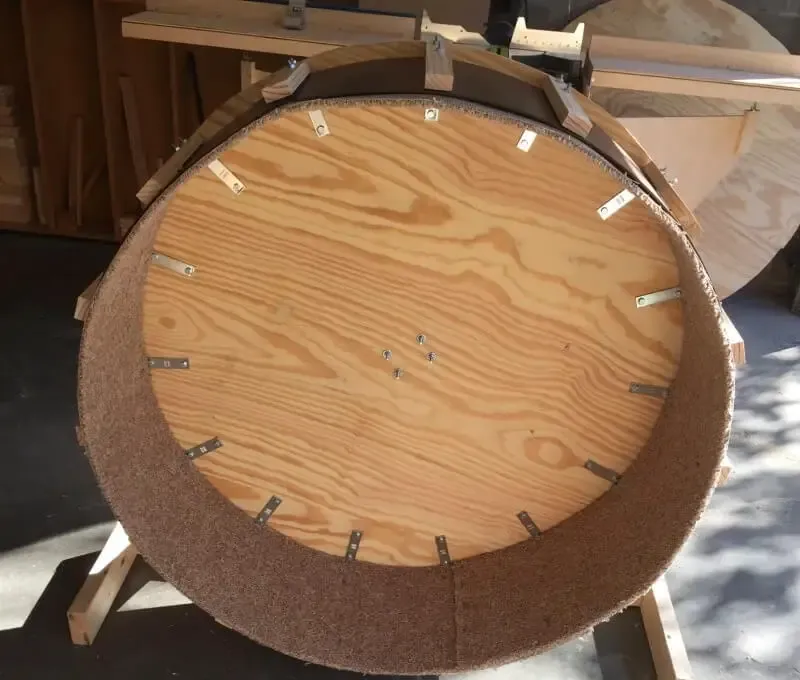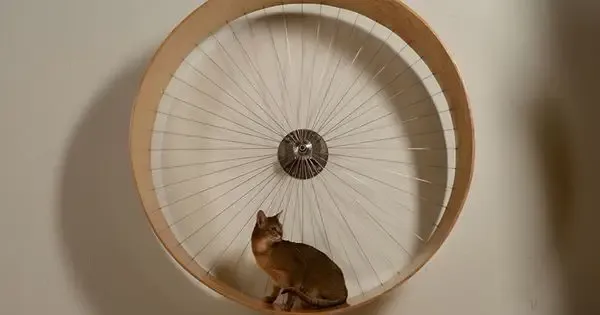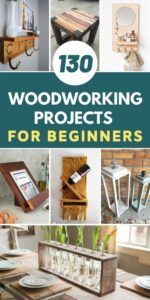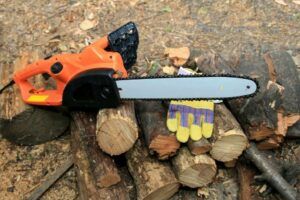
Cats are the most active household pets, never staying still. They can spend hours or days playing catch-me games with stray mice or running around the yard.
Exercise wheels are built for that purpose – to let these cats burn off excess energy without wreaking havoc on your furniture.
But these cat exercise wheels are quite expensive and you don’t want to spend a fortune on these toys.
So keep scrolling to learn these 12 great DIY cat wheel plans! You will find one that suits your pet and current budget best.
Table of Contents
- 1. DIY Cat Exercise Wheel
- 2. Steel Cat Exercise Wheel
- 3. Foam Poster Board Wheels
- 4. Kuna Puzzle Wheels
- 5. Cat Slash Hamster Wheels
- 6. Build A Cat Wheel With Heavy-Duty Caster
- 7. DIY Cat Running Wheel On A Budget
- 8. DIY Aka Hamster Wheel For Kitties
- 9. Inexpensive Cat Wheel DIY With Spoke
- 10. Modern Wood Giant Hamster Wheel
- 11. Free-Standing Plywood Spoke Cat Wheels
- 12. Plastic Cat Running Wheel
- Conclusion
1. DIY Cat Exercise Wheel

These non-toxic, smooth wood wheels are great for small cats or cats with dull paws. For the project, you only need plywood, adhesive, foam rubber, rollerblade wheels, and lath sticks.
Use circle cutters to create the wheels’ circle forms, then glue the lath sticks and add more arcs to complete the wheel’s shape.
Though optional, you may make a stable plywood base for the cat to ensure optimal stability and alignment.
Add extra plywood pieces in the gaps to reinforce its back, and do not forget to sand the wood surface with sandpaper or finishes to give them a more aesthetic touch.
Finally, you add a carpet layer inside of the wheel to prevent a tripping hazard for your cats.
Project details: instructables.com
2. Steel Cat Exercise Wheel

Are you one of those who prioritize stability and durability? The steel materials are the champion in this regard, handling several cats simultaneously.
Stains and grime are nothing against them, which makes cleaning a breeze. Better yet, steel wheels will likely stay firm on the ground and load a lot of weight inside.
Building this wheel is straightforward if you already have a rolling machine at home: curve the steel sheets, drill holes in it, and mount the axles to strengthen their centered position.
You may use DVDs to boost the aesthetic appeal as nut covers for the front bearings.
Project details: imgur.com
3. Foam Poster Board Wheels
Although less sturdy than wood or steel, foam poster board has many other competitive edges.
For one, it is super lightweight: even newborns or days-old kittens can move them around without too much effort. Secondly, their safety is unmatched; how can any pet injure itself playing around with only paper and tape?
You will double the foam poster layers for optimal stability, and use bent broom handles to support the frame. Wind up the entire wheel using duct tape, then instill a stopper to prevent excessive sliding.
4. Kuna Puzzle Wheels

Despite their advantages, wheels of sturdier materials are severely restricted in flexibility and adjustability.
Some cat owners have their hearts for lighter, more adaptive options, and here is where this Kuna puzzle wheel enters the scene.
The plywoods are CNC milled before being bound with other 3D-printing parts using tension straps and rubber mallets.
As such, they can easily be disassembled for relocation or portability purposes, especially during vacations or holiday trips.
Plus, the teeth slots are up to further adjustments. Suppose your cat outgrows its current wheel; you may widen the diameters to give your pet more running space. How convenient!
Project details: instructables.com
5. Cat Slash Hamster Wheels
With its exceptional traction and moving range, this wheel is a match made in heaven for both cats and hamsters. For people who do not mind spending a slightly large sum on material preparations: this project is for you.
The basic procedure is similar to the wood wheels we discussed above, except a semi-circle base is added to the bottom now for optimal stability and flexibility.
And what if your cat still struggles to run on the wood surface? Add a rug, carpet, or other materials on the wheels in that case.
6. Build A Cat Wheel With Heavy-Duty Caster
Are small exercise wheels not enough to quench your cat’s hyperactivity?
Then you will love this heavy-duty alternative; its exceptional dimension and sturdiness can stand strong against even the most aggressive cat.
Those already familiar with plywood wheels should find it easy to make this one since the basic steps are the same.
However, at the end of the process, do not forget to thread a caster wheel through the beams to strengthen the rotational mechanism.
Project details: tuxedo-cat.co.uk
7. DIY Cat Running Wheel On A Budget
Here comes another foam board wheel on our list, but better: a foam base is taped to the bottom via glue to make the system sturdier.
Also, there are no broom holders this time, but rolling spins are instilled into the strips to keep the exterior smooth.
Once finished building the wheels, you may decorate the surface with beautiful plaid wrappings. That way, your cat will be instantly attracted to the wheel without the need to put dish foods inside it.
Overall, this wheel is a great choice for tight-budget cat owners or cats that prefer lighter, smoother running surfaces.
8. DIY Aka Hamster Wheel For Kitties

If you are looking for solid, sturdy exercise wheels to place in the yard or garden, then this project is perfect.
Start by building wooden support beams for the wheels, then cut two huge wood semi-circles with a jigsaw and cup them together to form the complete wheel. And do not forget to glue the shims, as that can keep your bolts from protruding.
The cutting and cupping process do require some expertise, so only choose this project if you already have a handful of experience with wood crafting. Otherwise, the other options on our list would be a better fit.
Project details: imgur.com
9. Inexpensive Cat Wheel DIY With Spoke
Most wheels introduced thus far include an inner circle, an outer circle, and sometimes a base. While such designs are safe and functional, some active cats might find it boring; why not spice things up by adding spokes?
From afar, these moving wheels look similar to a bike or motorbike’s wheel, except much larger.
You attach the spindles and clamps with screws, install L-brackets to mount the outer circle, then mount the entire wheel to the walls for maximum stability. As a finishing touch, sand the surface to smooth out the wood.
10. Modern Wood Giant Hamster Wheel
Another plywood-wheel project on our list for yet hyperactive cats – except this time, it needs clamps, plunge router, epoxy, and aluminum flashing.
Cut two plywood circles with a plunge router or circle jig, then hoove an internal groove within the circles where aluminum flashings can fit in. Bend the flashing, and join it with the plywood using epoxy.
You should consider applying weights/clamps onto the wheels for maximum sturdiness. You may want to taper the base’s legs to achieve a more beautiful and modern look, too.
Still, this wheel is pretty bulky; it would be best to find a second person to assist you in this project.
11. Free-Standing Plywood Spoke Cat Wheels

Cats or hamsters alike will find tons of fun with this flexible yet solid plywood wheel. Not to mention, it is easy to make, almost the same as other wood wheel alternatives.
After cutting the inner wood circle with a jigsaw (about 4 feet in diameter), make the support slats for the outer ring. These slats should be 13 inches long to ensure both durability and strength.
Leave the glue on the slats to dry for at least one day (24 hours) before adding the base (optional) and pouring wood fillers into the gaps.
While using new woods is highly recommended, their production odors might annoy the cat. You should stain or seal the wheels to keep strong smells away.
Project details: grubbycat.com
12. Plastic Cat Running Wheel
Plastic wheels are lightweight and easy to use, though cats with sharp paws should tread more cautiously with this project.
Take down a corrugated plastic (approximately 4×8) and use dry markers to mark the guides down to the middle.
Once finding your desired diameter, secure the push pin onto the middle point, then draw an outer circle and the wheel’s arcs. Piece them together with tape and trim all unnecessary edges.
If there are still overlapping areas, add carpet tape to bind them securely. You will end up using the command strips that are like Velcro to easily take the carpet to sanitize everything.
Before bringing the wheels to usage, do not forget to test-run it first and adjust the settings where necessary.
Conclusion
Building a cat wheel is practical, cost-effective, and gives you chances to do regular exercise training for your cats as well as fun and grow better for them.
Most materials involved in the projects, such as plywood, plastic, and aluminum, are also very accessible.
Consider your house’s surface area, the cat’s habits, and your current budget to choose the most suitable project. Most importantly, do not forget to test-run and adjust the wheels frequently to align with the cat’s size development.







